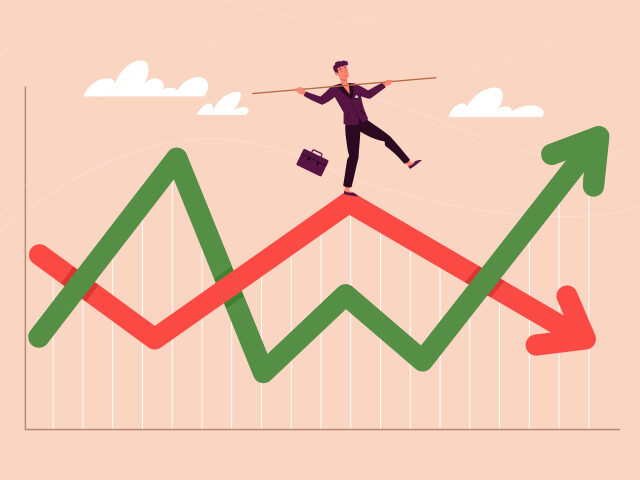The Rise of the ‘No Landing’ Scenario
The housing sector has been in a recession since last summer when home sales and home building slumped under the weight of rising mortgage rates. The manufacturing sector probably fell into recession in the fourth quarter of last year. Yet the labor market remains red hot, with even those two beleaguered sectors continuing to add jobs in January.
The strength of the labor market is giving rise to the idea that instead of a “soft landing” or a “hard landing,” the economy may be on track for “no landing” at all. That is to say, the long-awaited and much-heralded recession may not be looming in our near future—but that also means that inflation will not be coming down either.
We first heard the term “no landing” from Bank of America investment strategist Michael Hartnett in a client note in December. More recently, the idea has been popularized by Apollo Global Management chief economist Torsten Slok. “Under the no landing scenario the economy does not slow down, and upside risks to inflation are coming back after the initial decline in inflation driven by supply chain improvements,” Slok said in a recent report.
No Landing Implies the Fed Keeps Hiking
Hartnett puts it even more succinctly, writing that the “labor market [is] screaming ‘no landing’ … and no landing means no Fed pausing.” In other words, in the “no landing” scenario, the jobs market will not cool down enough for the Fed to be comfortable pausing rate hikes.
This is definitely still a contrarian take. Right now the market expects the Fed to pause after two more hikes, with the Fed’s interest rate target in the five percent to 5.25 percent range. That’s actually a bit more hawkish than the previous consensus view, which had the Fed pausing after the March hike. The market reluctantly gave that up after the Fed statement and several Fed speakers made it clear after the February meeting that the economic situation was still calling for more hikes, which is to say more than one.
Yet the notion of a third hike, which would come at the June meeting, is no longer seen as outlandish. A month ago, the market was assigning the likelihood of three more hikes just a 10 percent chance. Today, the odds implied by the fed funds futures for three more hikes are over 40 percent.

Traders work on the floor at the New York Stock Exchange as the Federal Reserve Chairman Jerome Powell speaks after announcing a rate increase on Nov. 2, 2022. (AP Photo/Seth Wenig)
We Might Have Been Here Before: What Does History Show?
It’s easy to see why a robust jobs market could sustain growth and inflation — and therefore the Fed’s hiking cycle. Putting more people on payrolls means rising incomes for the household sector. This tends to increase consumer spending very mechanically. It is also likely to boost consumer sentiment, which is a tailwind for consumer spending. Finally, it encourages wage growth, which puts even more spending power in the household sector.
Yet there have been periods in which job growth was quite high right before a downturn. A recent note from former Trump White House economist and now SMBC chief economist Joseph Lavorgna pointed out that the economy produced healthy job gains just before the 1973-75, 1980, and 1981-82 downturns. According to Lavorgna, jobs are not a leading indicator for the economy.
“Consequently, investors should not place too much emphasis on January’s gangbuster employment results. They do not tell us where growth is going but rather where the economy has been,” Lavorgna writes.
So what should we look to? Lavorgna points to the Index of Leading Economic Indicators (LEI) and the Senior Loan Officer Survey (SLOS). These have “accurately foreshadowed past inflection points,” Lavorgna writes. In the latest survey, loans officers reported they were tightening standards and seeing reduced demand across a wide range of business and consumer credit products. The LEI is down 3.8 percent over the six-month period between June and December 2022.
And then there is the yield curve. While the two-ten inversion became a little less extreme on Friday, floating up toward a negative 77 points, it is still lower than it has been since 1981. As the chart below shows, the two-ten inversion has a perfect track record in predicting recessions, albeit with variable lags. Importantly, there are no false positives.

From No Landing to Hard Landing
One scenario that has not gotten a lot of attention might be able to reconcile the conflicting data. Perhaps the market is right that the Fed will pause after hiking in March and May. Although large and fast by historical standards, the hikes last year and this year might prove inadequate to the tasks of taming inflation given the tightness of the labor market and the strong consumer demand, forcing the Fed to return to hiking again. A revived hiking cycle could spook markets and businesses, breaking the back of labor hoarding and triggering a rise in unemployment. That would likely bring on the recession everyone has been expecting.
That narrative, however, pushes out the recession until at least the second half of this year and probably into the fourth quarter. Perhaps even into next year.

COMMENTS
Please let us know if you're having issues with commenting.